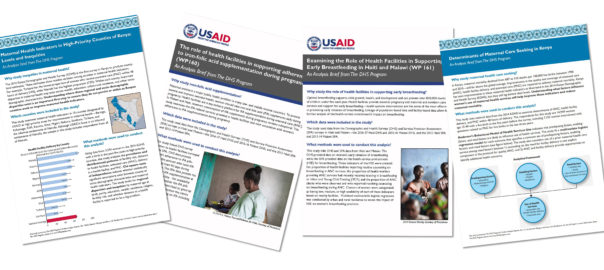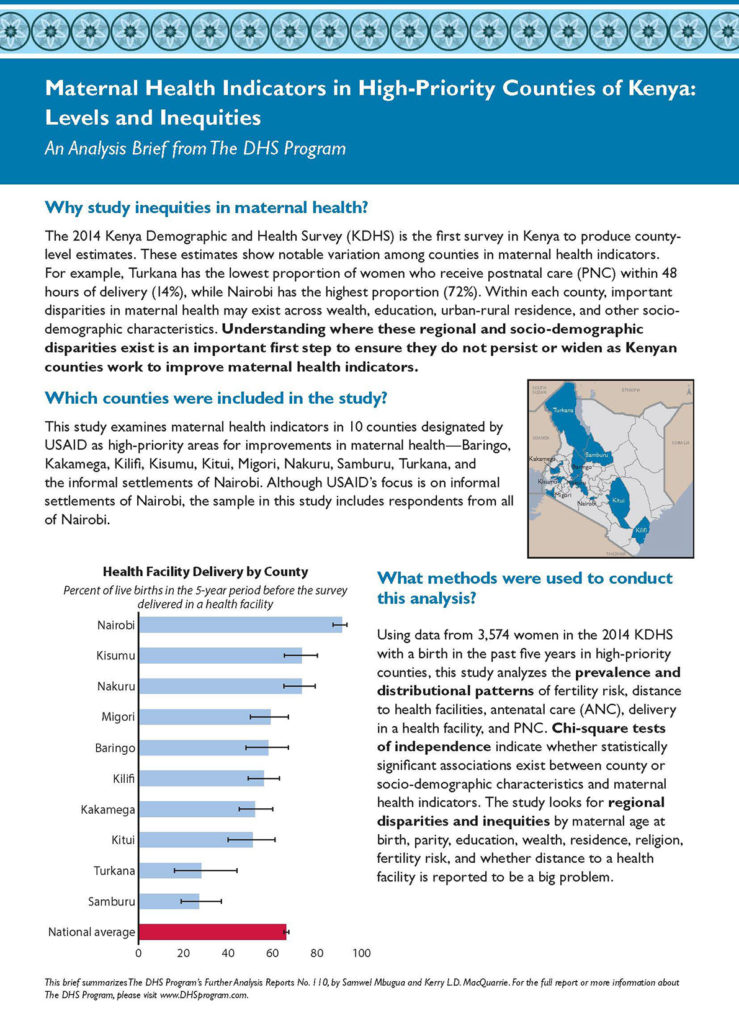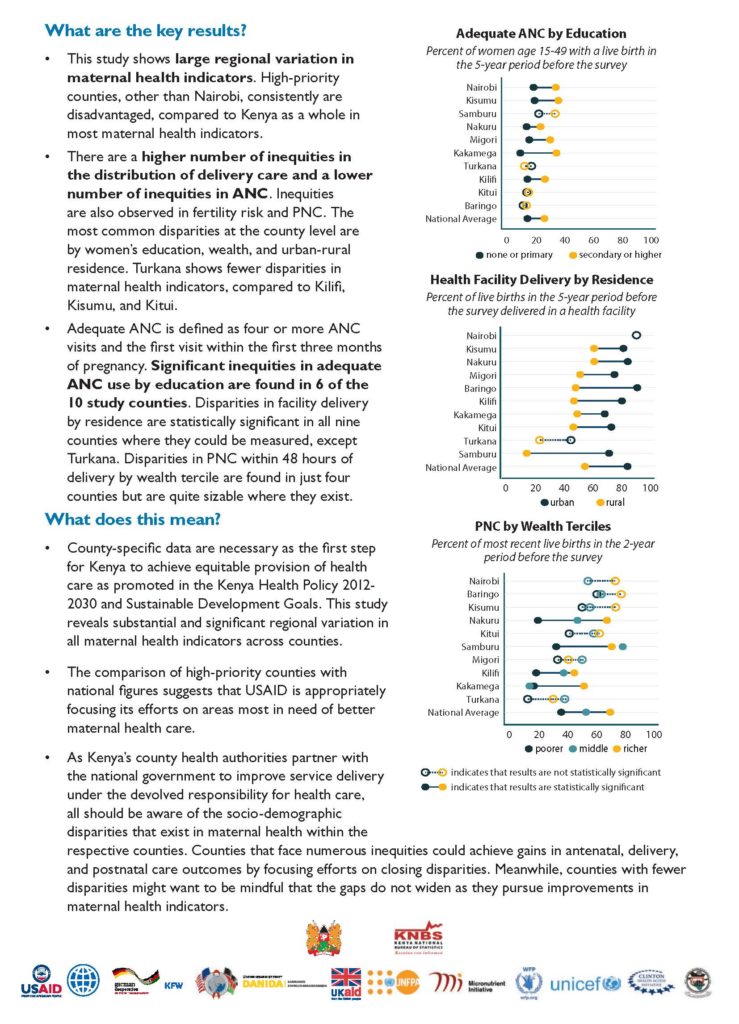Introducing DHS Program Analysis Briefs

Over the last 30 years, The DHS Program has published more than 500 analytical reports in collaboration with researchers and institutions around the world. These reports extend to a wide variety of topics covering population and health issues with the ultimate purpose to be used in policy formation, program planning, and monitoring and evaluation. However, many potential beneficiaries of DHS Program research findings are intimidated by these long, technical reports.
In order to expand the reach of DHS analyses to program managers, policymakers, and academic researchers, The DHS Program is pleased to announce a new user-friendly format of analysis reports. Analysis Briefs are two- to three-page user-friendly documents summarizing the methods, key findings, and any relevant action steps.
Featured image: © ICF
These abbreviated, colorful briefs with graphics highlight major findings in a more accessible way that allow readers to use the findings for program or policy use in their respective country. If readers choose to dive into the full report, the brief still provides an orientation through the technical data in the full report. The graphics are presented in a simplified way to orient the information in a clear, visual display. Readers with limited time and attention are encouraged to review the accompanying briefs for a condensed summary of the full analysis report.
Briefs can be found on the full report publication summary page or by filtering by publication type ‘Analysis Briefs’ in The DHS Program publication search.




thanks for the information